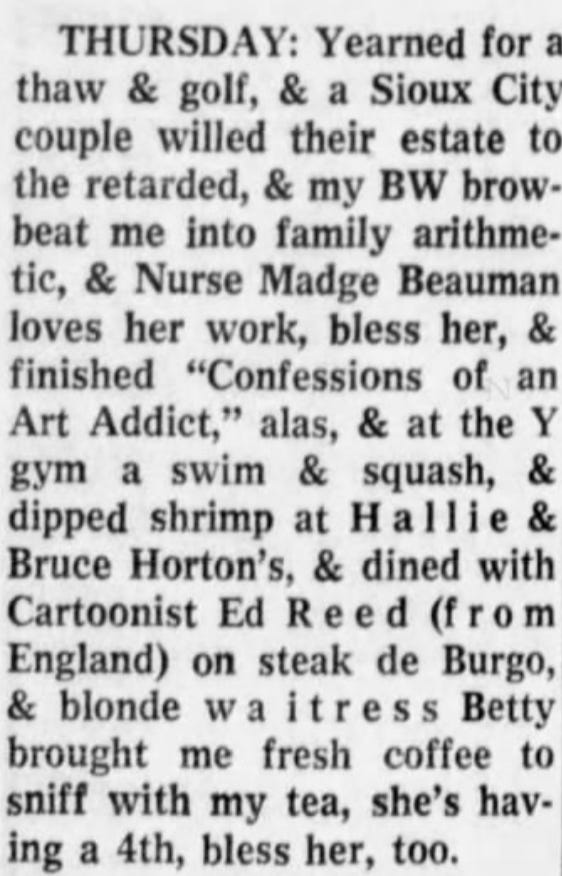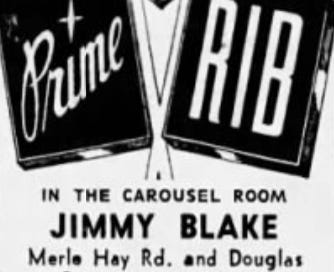Steak de burgo

From the steak de burgo’s genesis sometime in the middle decades of the 20th century, it has conceptually shifted while remaining recognizable. A tenderloin cut of beef. A sauce based in olive oil—as some sources report it was made in its earliest iterations—but now more likely based in butter or cream. Basil, oregano. A fistful of garlic. Taste of Home calls for just one clove of garlic, which seems ungenerous. Rube’s Steaks calls for several tablespoons of garlic paste, though freshly crushed garlic cloves feels like the appropriate amount.
The de burgo is uniquely of Des Moines in a way that few dishes or things truly are. Like other slightly-less-than-midsized cities, the cultural history of Des Moines is one of trends filtering in from larger neighboring cities, often accompanied by the money that propagates them. This is still true even in a world where the vines of accessible internet are beginning to spread out from the more metropolitan areas into the lesser. Whether it’s a specific restaurant or bar or just the idea that animates it, it probably floated down from Minneapolis or washed upriver from Kansas City.

At the beginning of August, Cityview food critic Jim Duncan laid out his case for the history of the de burgo, citing “30-plus years of research.” The initial parts of this theory are reasonable and supported by references made in reviews published in The Des Moines Register’s archives. The particular style of steak began appearing on the menus of the more refined restaurants of the pre-war era. Restaurants with names like Vic’s Tally-Ho and Johnny and Klay’s, claims to the de burgo’s creation coming from Vic and Johnny respectively. The style was successful and began appearing in other restaurants. Most of these restaurants have vanished into the ether of the past, found now only in the annals of tastefully sound-tracked slideshow videos with titles like “Lost Des Moines Restaurants on vintage postcards.”

Writing in DSM Magazine last year, Wini Moranville put forth a more probable history—or at least one person’s claim to it. Moranville interviewed the son of Kay Campiano—part owner of one of the restaurants with claim to the de burgo’s origin—who stated for the record that his father brought the recipe back from New Orleans after the second world war. This seems somewhat more likely.
But the steak de burgo doesn’t seem to be prepared anywhere in New Orleans. It’s essentially Des Moines, so ingrained in its food scene that it’s essentially invisible. Many of the people I’ve asked about it say that they didn’t even realize it wasn’t a widely served style of steak.
For what it’s worth, I dug around in the Register’s archives. The earliest mention I found of the steak de burgo was in a 1963 column titled “Over the Coffee.” This iteration of the long-running Register column was written by Harlan Miller and appears to the modern reader as barely decipherable recollections of one man’s week in 1960s Des Moines. A steak de burgo is had on a Thursday. The restaurant is not named, but the waitress is blonde and expecting. The de burgo appears in advertisements for restaurants and as bright moments in disappointed food reviews from local columnists throughout the 70s.

If you order the steak de burgo at Simon’s—a restaurant that, like many of the “Old American” casual dining institutions in Des Moines, is part of a lineage that remains dedicated to a midcentury style of marriage of Italian steak house cuisine—that’s exactly what you’ll find. An aromatic and unbroken layer of seared garlic built upon a filet bedrock, catalyzed in butter and herbs. It feels simple, but also singular.
What defines a local and regional culture is, more often than not, so known, constant, and unchanging that it becomes functionally invisible. The steak de burgo, with its own history widely speculated upon and claims to its creation varying, feels adrift in time, a dish with no definitive genesis that will now live forever as an emblem of central Iowa.

